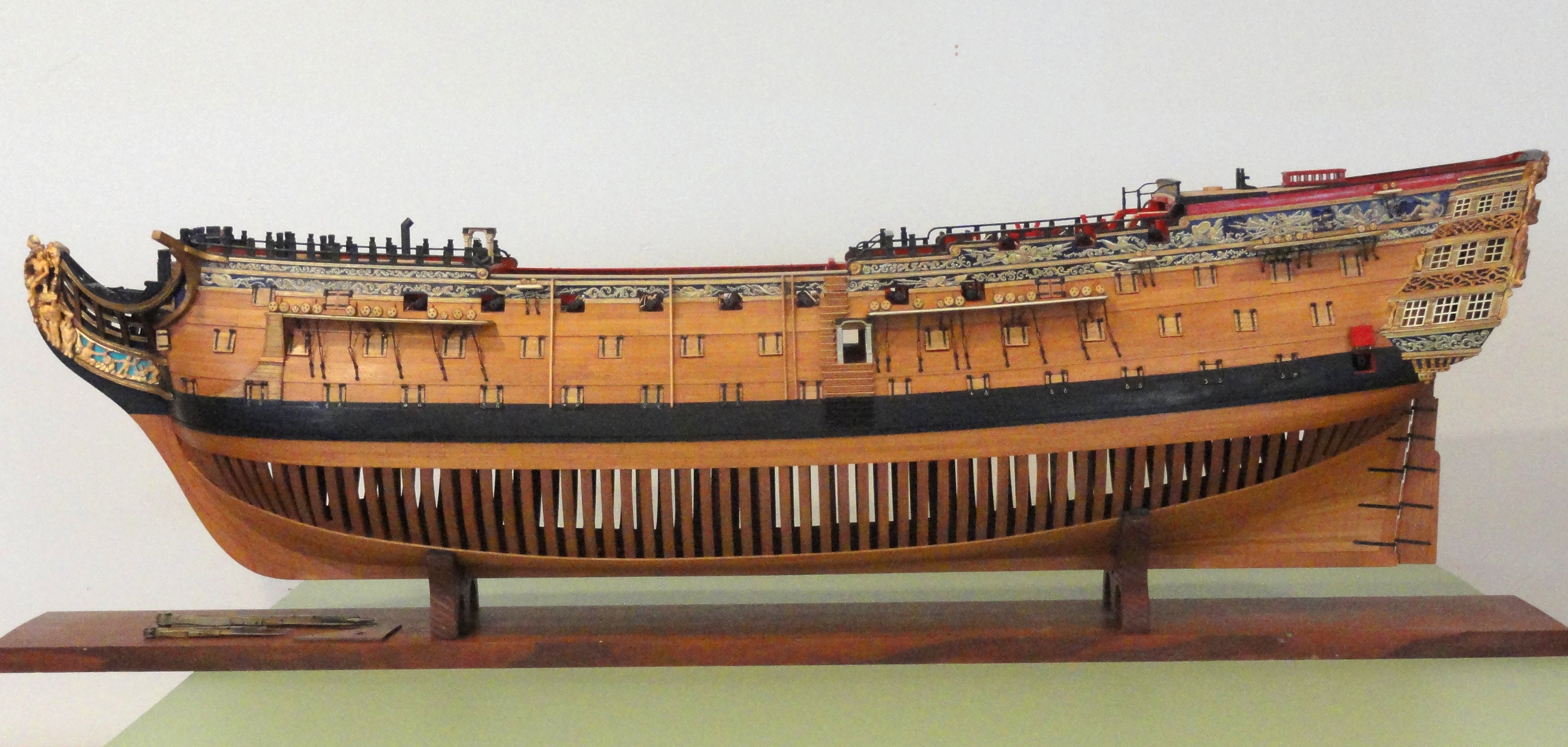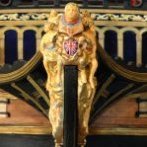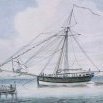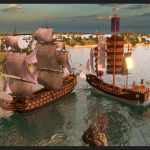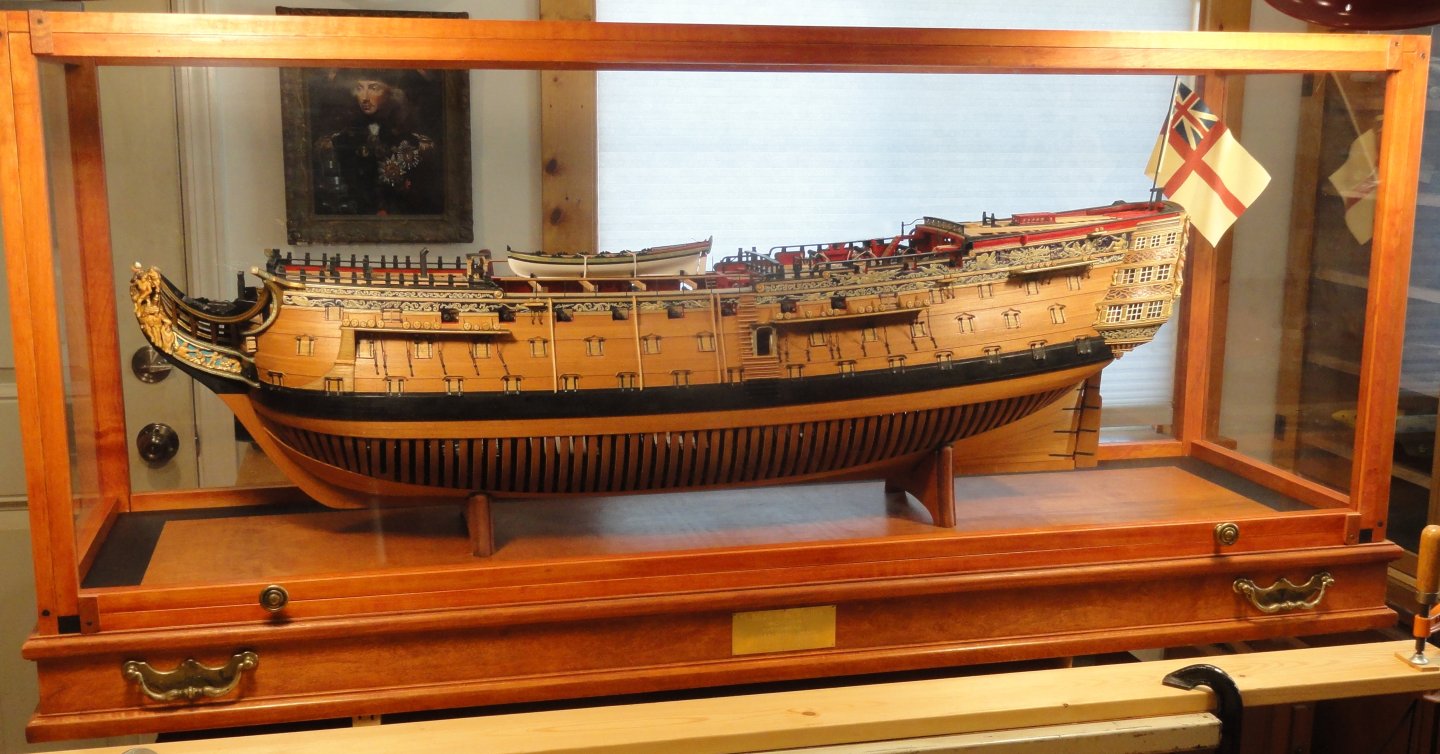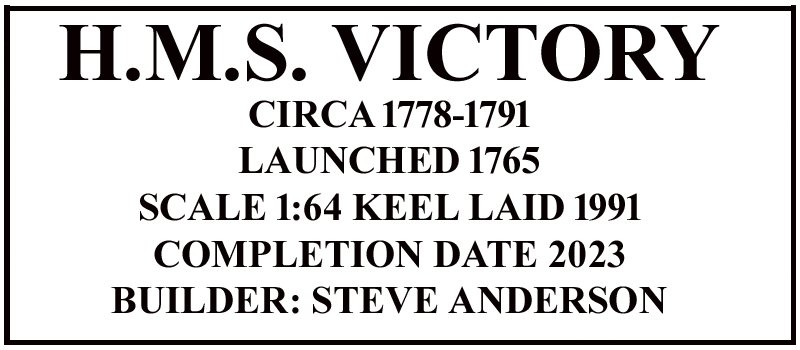-
Posts
59 -
Joined
-
Last visited
Contact Methods
-
MSN
jasta11ace@msn.com
-
Website URL
www.anderson-art.com
Profile Information
-
Gender
Male
Recent Profile Visitors
-
 Kenchington reacted to a post in a topic:
HMS Victory c.1765-1791 by Steve Anderson - FINISHED - 1:64 scale
Kenchington reacted to a post in a topic:
HMS Victory c.1765-1791 by Steve Anderson - FINISHED - 1:64 scale
-
 vvvjames reacted to a post in a topic:
HMS Victory c.1765-1791 by Steve Anderson - FINISHED - 1:64 scale
vvvjames reacted to a post in a topic:
HMS Victory c.1765-1791 by Steve Anderson - FINISHED - 1:64 scale
-
 SiriusVoyager reacted to a post in a topic:
HMS Victory c.1765-1791 by Steve Anderson - FINISHED - 1:64 scale
SiriusVoyager reacted to a post in a topic:
HMS Victory c.1765-1791 by Steve Anderson - FINISHED - 1:64 scale
-
 DocRob reacted to a post in a topic:
HMS Victory c.1765-1791 by Steve Anderson - FINISHED - 1:64 scale
DocRob reacted to a post in a topic:
HMS Victory c.1765-1791 by Steve Anderson - FINISHED - 1:64 scale
-
 stupot reacted to a post in a topic:
HMS Victory c.1765-1791 by Steve Anderson - FINISHED - 1:64 scale
stupot reacted to a post in a topic:
HMS Victory c.1765-1791 by Steve Anderson - FINISHED - 1:64 scale
-
 dafi reacted to a post in a topic:
HMS Victory c.1765-1791 by Steve Anderson - FINISHED - 1:64 scale
dafi reacted to a post in a topic:
HMS Victory c.1765-1791 by Steve Anderson - FINISHED - 1:64 scale
-
 _SalD_ reacted to a post in a topic:
HMS Victory c.1765-1791 by Steve Anderson - FINISHED - 1:64 scale
_SalD_ reacted to a post in a topic:
HMS Victory c.1765-1791 by Steve Anderson - FINISHED - 1:64 scale
-
 KARAVOKIRIS reacted to a post in a topic:
HMS Victory c.1765-1791 by Steve Anderson - FINISHED - 1:64 scale
KARAVOKIRIS reacted to a post in a topic:
HMS Victory c.1765-1791 by Steve Anderson - FINISHED - 1:64 scale
-
 Steve Anderson reacted to a post in a topic:
HMS Bellona 1760 by SJSoane - Scale 1:64 - English 74-gun - as designed
Steve Anderson reacted to a post in a topic:
HMS Bellona 1760 by SJSoane - Scale 1:64 - English 74-gun - as designed
-
 Steve Anderson reacted to a post in a topic:
HMS Bellona 1760 by SJSoane - Scale 1:64 - English 74-gun - as designed
Steve Anderson reacted to a post in a topic:
HMS Bellona 1760 by SJSoane - Scale 1:64 - English 74-gun - as designed
-
 Archi reacted to a post in a topic:
New to Model Ship World
Archi reacted to a post in a topic:
New to Model Ship World
-
 Maxthebuilder reacted to a post in a topic:
HMS Victory c.1765-1791 by Steve Anderson - FINISHED - 1:64 scale
Maxthebuilder reacted to a post in a topic:
HMS Victory c.1765-1791 by Steve Anderson - FINISHED - 1:64 scale
-
 Steve Anderson reacted to a post in a topic:
HMS Victory c.1765-1791 by Steve Anderson - FINISHED - 1:64 scale
Steve Anderson reacted to a post in a topic:
HMS Victory c.1765-1791 by Steve Anderson - FINISHED - 1:64 scale
-
 Steve Anderson reacted to a post in a topic:
HMS Victory c.1765-1791 by Steve Anderson - FINISHED - 1:64 scale
Steve Anderson reacted to a post in a topic:
HMS Victory c.1765-1791 by Steve Anderson - FINISHED - 1:64 scale
-
 Steve Anderson reacted to a post in a topic:
HMS Victory c.1765-1791 by Steve Anderson - FINISHED - 1:64 scale
Steve Anderson reacted to a post in a topic:
HMS Victory c.1765-1791 by Steve Anderson - FINISHED - 1:64 scale
-
Big thanks to all for your comments. Part 13 The Case Completion The Winter of '22-'23. Rains storms, high winds, and flooding rumbled through California. After years of drought, Mother Nature more than made up for it in three monthes. In my drawings I planned to have the the left facing side hinged for access. I realized the arc of the travel would be too high and awkward. In addition the weight of the panel would put too much stress on the whole structure. In order to keep the frames the same dimension all around I designed and built a corner mockup, seen below, with interlocking cuts. The outside piece remains in place as part of the case, while inside piece is the removable frame and its plex. Now one may ask, how do you remove and replace the access panel? On each corner there is a quarter radious tab that turns 90 degrees to release the panel. With the two knobs pull and loosen the bottom, then with one hand hold the top and remove. Same way in reverse to install. The final touch was engraving the builder's plate. When it finally has a patina I will polish the surface so the letters show up better. Thank you all for showing interest and for your valued comments.
-
 Steve Anderson reacted to a post in a topic:
HMS VICTORY 1765 by albert - 1/48
Steve Anderson reacted to a post in a topic:
HMS VICTORY 1765 by albert - 1/48
-
Part 12 The Case of the Case In the latter part of October, 2022, I drew up plans for the display case that would protect Victory from dust, cats, and the few individuals that can't resist touching something. I did this "Old School", something I really enjoy, with drafting tools and a mechanical pencil on my drafting table. Dimentions of the base are 54 1/2" L x 17 5/8" W x 3 1/2" T. The case frame for the plex is 53" L x 16" x 21" T. I chose Maple for the material and Minwax "Gunstock" for the stain. I've built smaller cases before and a few furniture pieces. I estimated about a month to do this. Then the rains came through the Central Coast of California. To be continued.
-
The cap rail installed on the gangway railing. Druxey kindly pointed out to me that I had used New Times Bold type face for the VICTORY letters. This reqired a repainting of the counter, which I'm much happier with. So, along comes a unexpected fun detail that adds so much. While fabricating the ensign fixture and staff I decided to make the ensign. I did this using Photoshop. Just adds an extra magesty to the ship. One of the last extra finishing touches was I went over the hand cut balistrades airbrushed in gold leaf and with a small brush over painted, glazed burnt umber washes to give a 3D woven look that is seen in the 1765 model. Tedious but was all done in a day. Victory was now finished to where I wanted it to be my the end of October, 2022. She was now ready for a museum quality case. Next in Part 12 The Case of the Case
-
Part 11 Road to completion It has been a long, long road. After a two year break (October 2020 to October 2022) from painting to finish Victory. Here's the last few details. Another one of those mini projects that was set aside was how to make rigols. Using 20 guage copper wire, anealed over the gas stove, I drilled holes in a wood block to install brass pins for shaping. Small pieces of manela file folder stock were glued underneath and cut to shape useing an X-acto knife. Drilled holes in the hull to press fit the finished rigol. Bingo. Problem solved. Next came the gangway rails. Photos explain.
-
Really nicely done Dave. Very informative. I have a 40 year old J Class fiberglass hull on one of my work tables. 36" LOA, 1:43 scale. Given to me a few weeks ago by my best friend. He just discovered he had it a couple of months ago. While we all think we have too much stuff, he has two cargo containers on his property for the overflow.
- 31 replies
-
- Shamrock V
- Amati
-
(and 2 more)
Tagged with:
-
 Steve Anderson reacted to a post in a topic:
Shamrock V by David Lester - FINISHED - Amati - 1:80 - J Class Yacht
Steve Anderson reacted to a post in a topic:
Shamrock V by David Lester - FINISHED - Amati - 1:80 - J Class Yacht
-
Christian... Thank you very much. "A model of one of of the most famous ships in her original (as far as we know today) appearance." Pretty good summation. Albert...Thanks. Allan...Thank you for kind compliments and the Bloomfield/Armstrong question. I could go with Johnny's answer above, "Hmmmm, 78 ... 87 ... could be lysdexia. (dyslexia 😉 )", but I won't. In Brian Lavery's book, " Nelson's Navy", both types, page 82, are discussed. Frankly I chose the Bloomfield pattern due its cleaner design and the button loop. The loop ensures the breaching rope will never flip off the button for however many decades the ship will last. In the '90s there was next to nothing available on the 1765 -1800 version of Victory. All I was able to find for Bloomfield was "late 18th Century", which fit the window. I think I'm going to have to stretch my span of years in the title. Thanks for the info. Cheers, Steve
-
 Steve Anderson reacted to a post in a topic:
HMS Victory c.1765-1791 by Steve Anderson - FINISHED - 1:64 scale
Steve Anderson reacted to a post in a topic:
HMS Victory c.1765-1791 by Steve Anderson - FINISHED - 1:64 scale
-
 Steve Anderson reacted to a post in a topic:
HMS Victory c.1765-1791 by Steve Anderson - FINISHED - 1:64 scale
Steve Anderson reacted to a post in a topic:
HMS Victory c.1765-1791 by Steve Anderson - FINISHED - 1:64 scale
-
When all blocks were cut out they were aligned upside down on a flat surface covered with wax paper and glued together. Shaping was done with sanding blocks to match the frame lines. I traced the outline that would be the top of the boat on a scrap piece of maple, cut that with the band saw and glued the boat hull plug to that. I then discovered that by saving the cut off sections I could use those as clamps during the framing process. Next, the keel clamps. The whole hull construction is 1/8" wide thin strips of Basswood. The keel was laminated to the proper thickness, When dry both sides were carefully block sanded. On the upper side where the keel meets the hull wood 1/8" spacer blocks attached. The plug was sprayed with a couple of coats of clear lacquer then waxed so nothing would stick. Assembly was pretty straight forward. I centered the keel and taped it down fore and aft. Starting from the center thin strips, extra long were soaked in water for about 30 seconds. I did some pre-forming around a 1" wood dowel. I inserted the piece between the keel spacers with a small drop of glue and with smaller dowels rolled pressed to the hull and keel then attached the ends on both sides with a couple dabs of glue. Taped it in place with some blue tape, fit up the outer clamps, added another 1/8" spacer on each side of the frame. Repeated same until complete. Planking was done in the usual manner. Cutting hull loose along the sheer line established by the upper strake was pretty easy with a sharp No.11 Xacto blade. More sanding, primer, painting was next. I mixed a warm white with a touch of yellow and deck tan for the hull. Pure white is too bright for a scale model. As in a painting white should be reserved for that super white sparkle reflected by the Sun.
About us
Modelshipworld - Advancing Ship Modeling through Research
SSL Secured
Your security is important for us so this Website is SSL-Secured
NRG Mailing Address
Nautical Research Guild
237 South Lincoln Street
Westmont IL, 60559-1917
Model Ship World ® and the MSW logo are Registered Trademarks, and belong to the Nautical Research Guild (United States Patent and Trademark Office: No. 6,929,264 & No. 6,929,274, registered Dec. 20, 2022)
Helpful Links
About the NRG
If you enjoy building ship models that are historically accurate as well as beautiful, then The Nautical Research Guild (NRG) is just right for you.
The Guild is a non-profit educational organization whose mission is to “Advance Ship Modeling Through Research”. We provide support to our members in their efforts to raise the quality of their model ships.
The Nautical Research Guild has published our world-renowned quarterly magazine, The Nautical Research Journal, since 1955. The pages of the Journal are full of articles by accomplished ship modelers who show you how they create those exquisite details on their models, and by maritime historians who show you the correct details to build. The Journal is available in both print and digital editions. Go to the NRG web site (www.thenrg.org) to download a complimentary digital copy of the Journal. The NRG also publishes plan sets, books and compilations of back issues of the Journal and the former Ships in Scale and Model Ship Builder magazines.

